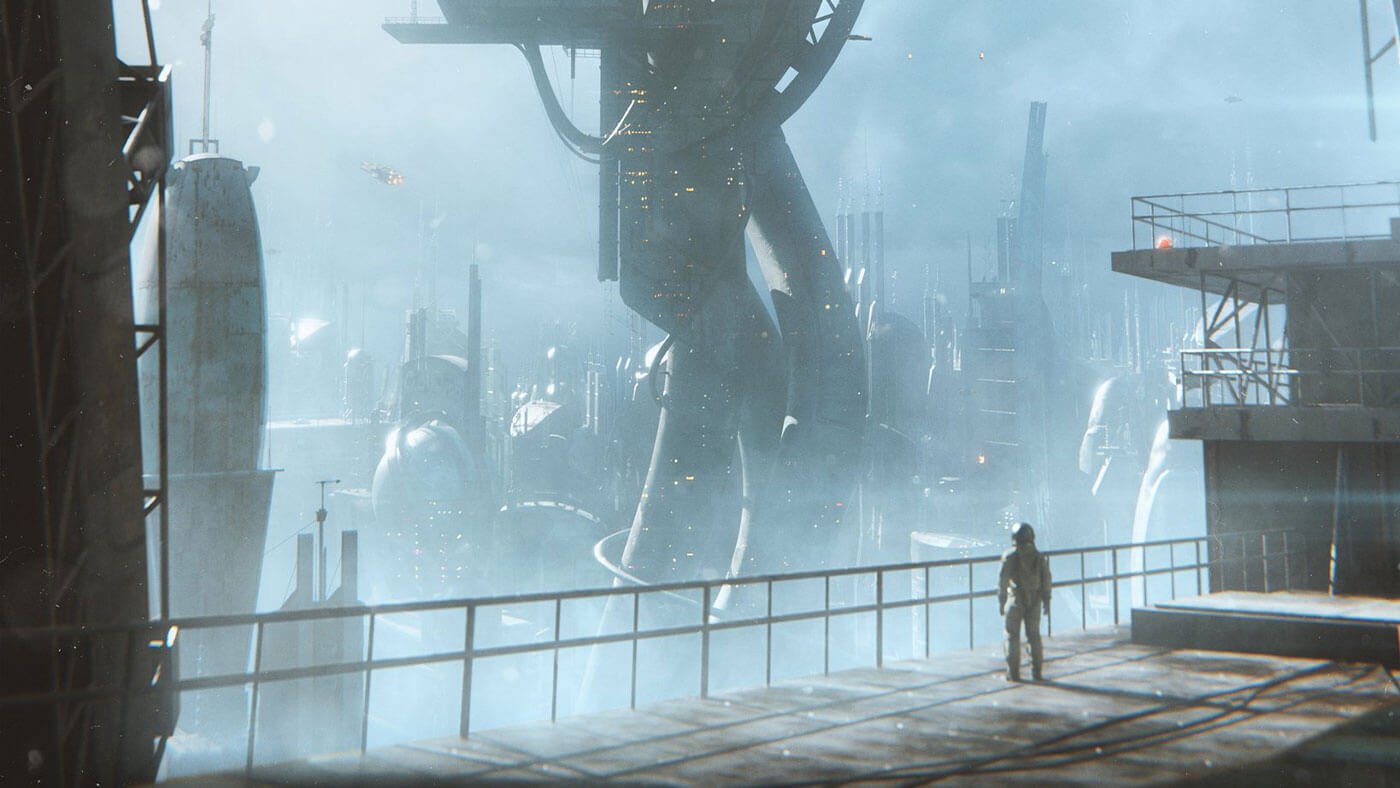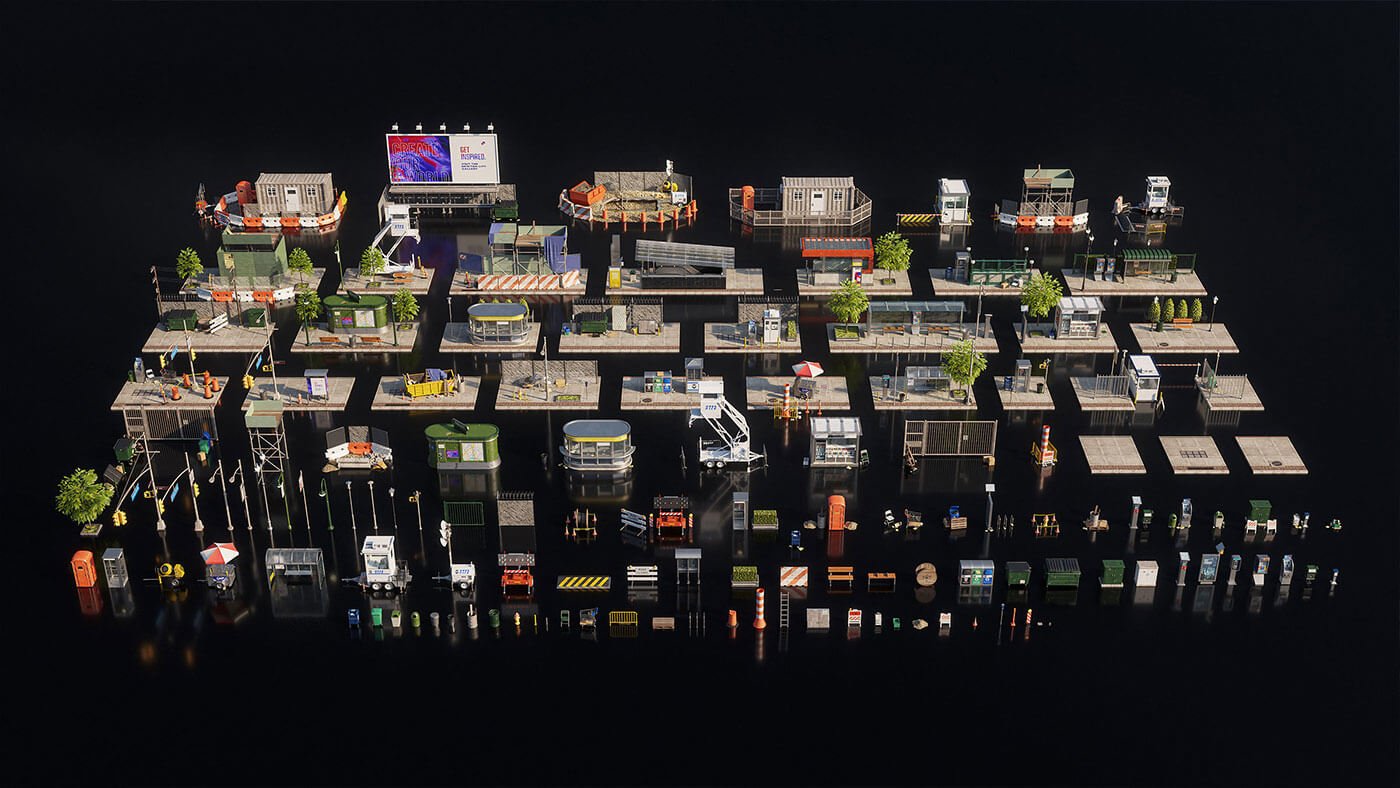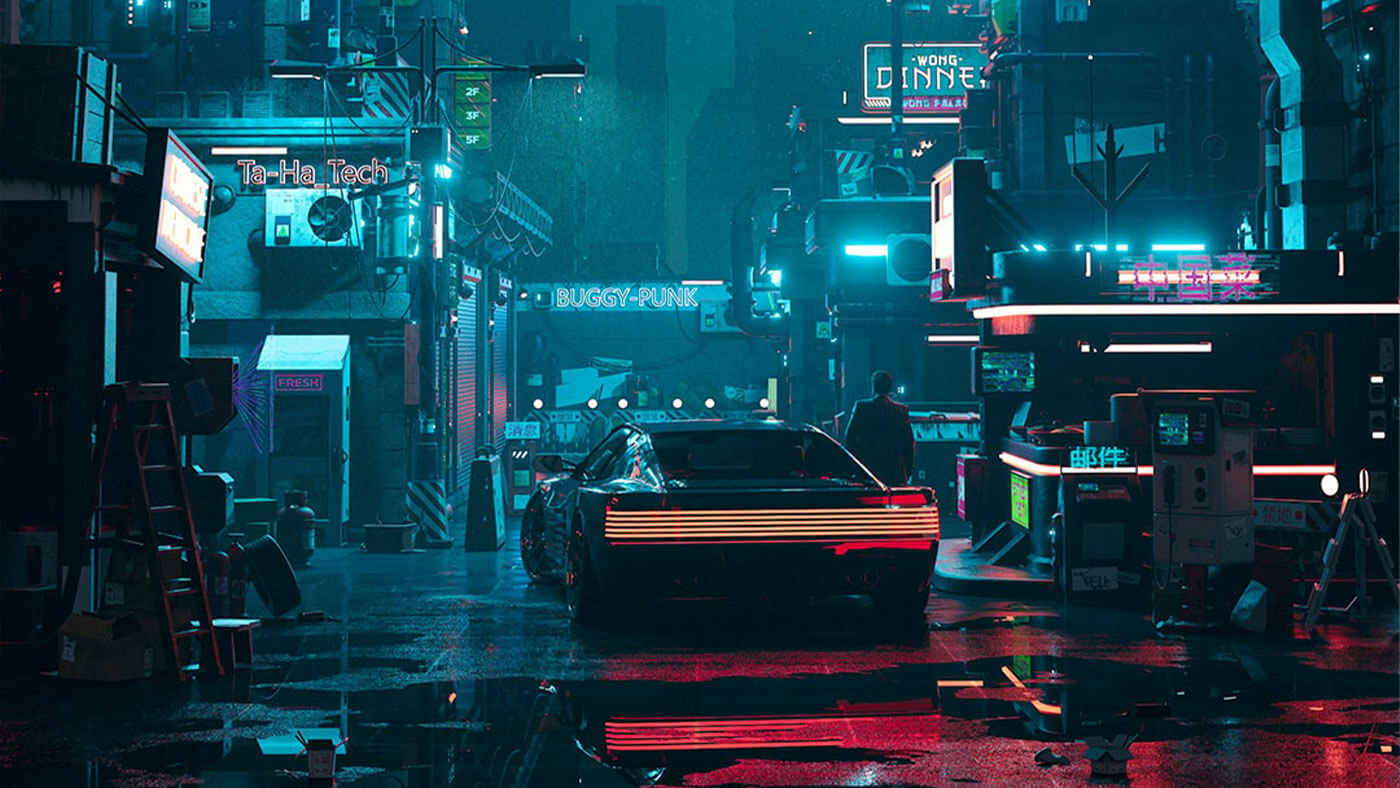Top 3D Artists Share Advice for Beginners
At KitBash3D, we see this question all too often: “What 3D software should I use?” It’s understandable given the variety of 3D applications out there. KitBash3D alone supports 3ds Max, Blender, Cinema 4D, Houdini, Maya, Unity, and Unreal Engine native file formats on our premium 3D asset store. While there is some overlap between the programs, each software lends itself to different uses, and what might appeal to a game developer won’t necessarily appeal to a concept artist.
1. 3ds Max
3ds Max offers a flexible toolset that enables you to create massive worlds in games, visualize high-quality architectural renderings, model finely detailed interiors and objects, and bring elements to life with animation and VFX. It’s a favorite of professional artists like Sava Zivkovic (Cinematics Director, Destiny 2, Gears of War 5).
2. Blender
Blender is a free and open source 3D creation suite that supports the entirety of the 3D pipeline—modeling, rigging, animation, simulation, rendering, compositing and motion tracking, video editing, and 2D animation. It’s the “Swiss army knife” of 3D, and a software of choice for artists like Danar Worya (concept artist, The Last of Us Part II).
3. Cinema 4D
Cinema 4D (C4D) is a 3D modeling, animation, simulation, and rendering software designed to make 3D workflows more accessible for design, motion graphics, VFX, AR/MR/VR, game development, and all types of visualization professionals. Creators like Aaron Limonick (concept artist, Uncharted, The Last of Us) use it to great effect.
4. Houdini
Houdini is built from the ground up to be a procedural system that empowers artists to work freely, create multiple iterations, and rapidly share workflows with colleagues. If this sounds alien to you, this may not be the place to start.
5. Maya
Maya is a VFX industry standard tool that allows you to animate characters, shape 3D objects and scenes, and create realistic effects from explosions to cloth simulations. There are lots of tutorials available online, making this a viable choice for those interested in a career in filmmaking.
6. Unity
Unity is a free game engine and works quite differently from the other 3D packages on this list. It's designed to help you build 2D, 3D, and VR games and apps at speed, but it can also be a powerful tool for other uses like previsualization, as David Levy (Concept Artist, Avatar, Star Wars) demonstrates.
7. Unreal Engine
Unreal Engine is also free game engine similar to Unity but is designed for photorealistic rendering, dynamic physics and effects, lifelike animation, and robust data translation, which artists use to create everything from interactive environments to films and more.
What Are Artists Using?
To bring further clarity to the question of where to begin, we asked some of our favorite world builders what software they use and what they recommend for those just starting out.
Marco Zagara:
 “The most important thing, in my opinion, is to start with some of the most famous 3D softwares on the market, like Blender and C4D for example. There are many tutorials and courses about these programs online so you'll be totally able to learn pretty much anything you need. Then, once you get familiar with the basics, I think software like Marvelous Designer, Zbrush, and Adobe Substance 3D Designer would be a great addition to your skillset. I would also suggest After Effects and/or Photoshop for Post Production.”
“The most important thing, in my opinion, is to start with some of the most famous 3D softwares on the market, like Blender and C4D for example. There are many tutorials and courses about these programs online so you'll be totally able to learn pretty much anything you need. Then, once you get familiar with the basics, I think software like Marvelous Designer, Zbrush, and Adobe Substance 3D Designer would be a great addition to your skillset. I would also suggest After Effects and/or Photoshop for Post Production.”
Dangiuz:
 “I myself use Cinema 4D; I’ve been growing up using that and I don’t see myself changing. But 3D softwares are, more or less, all the same, so for starters my suggestion is to pick up Blender, which is completely free, and learn the basics there, so eventually you will be able to use most 3d softwares afterwards!"
“I myself use Cinema 4D; I’ve been growing up using that and I don’t see myself changing. But 3D softwares are, more or less, all the same, so for starters my suggestion is to pick up Blender, which is completely free, and learn the basics there, so eventually you will be able to use most 3d softwares afterwards!"
toomuchlag:
 “[Try] any free software you can get your hands on. Try multiple softwares, don't stick with the first. Find what you vibe with and get good at the theory behind how to create light, color, composition, understanding 3D fundamentals, etc. If you know the rules, any software will work with a bit of practice. Get wise about the fundamentals rather than the tools. See it like drawing; focus on the act of drawing and not the quality of the pencil.”
“[Try] any free software you can get your hands on. Try multiple softwares, don't stick with the first. Find what you vibe with and get good at the theory behind how to create light, color, composition, understanding 3D fundamentals, etc. If you know the rules, any software will work with a bit of practice. Get wise about the fundamentals rather than the tools. See it like drawing; focus on the act of drawing and not the quality of the pencil.”
SkieGraphicStudio:
 “I think that Cinema 4D and Blender are the easiest softwares for modeling. I also recommend Unreal Engine for animation or some real-time rendering scenes.”
“I think that Cinema 4D and Blender are the easiest softwares for modeling. I also recommend Unreal Engine for animation or some real-time rendering scenes.”
DizzyViper:
 “Start with a software that is easily accessible for you and feels comfortable. In my opinion, Blender is probably the best all around to start with since it’s free and offers many different functions that can help you find what you like about 3D (modeling, or lighting, or simulations, etc.). And, after understanding and getting a feel for the 3D space, move to a software that concentrates more on the specific field you like.”
“Start with a software that is easily accessible for you and feels comfortable. In my opinion, Blender is probably the best all around to start with since it’s free and offers many different functions that can help you find what you like about 3D (modeling, or lighting, or simulations, etc.). And, after understanding and getting a feel for the 3D space, move to a software that concentrates more on the specific field you like.”
Final Thoughts
Overall, the message is pretty unanimous: if you don’t know where to start, Blender may be your best bet! But don’t let that dissuade you from jumping straight into programs like C4D or Unreal if you like what those programs are capable of. At the end of the day, the only thing standing between you and the art you want to make is “learning something new.”
We hope these insights can help you get your start! Remember, the artists above were once just as new as you are! All it takes is tutorials, practice, and time. If you do make that leap and use our 3D models in any of your work, don’t hesitate to reach out by tagging us on social media or using #KitBash3D! Happy KitBashing!




